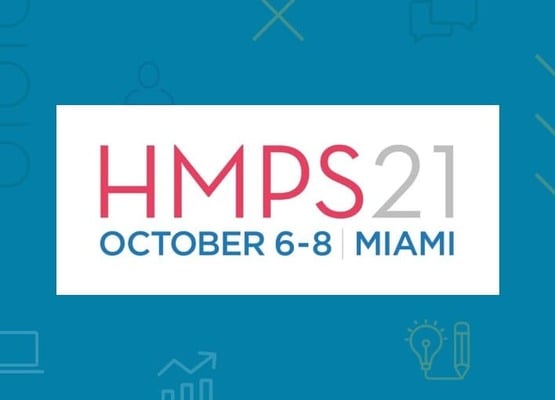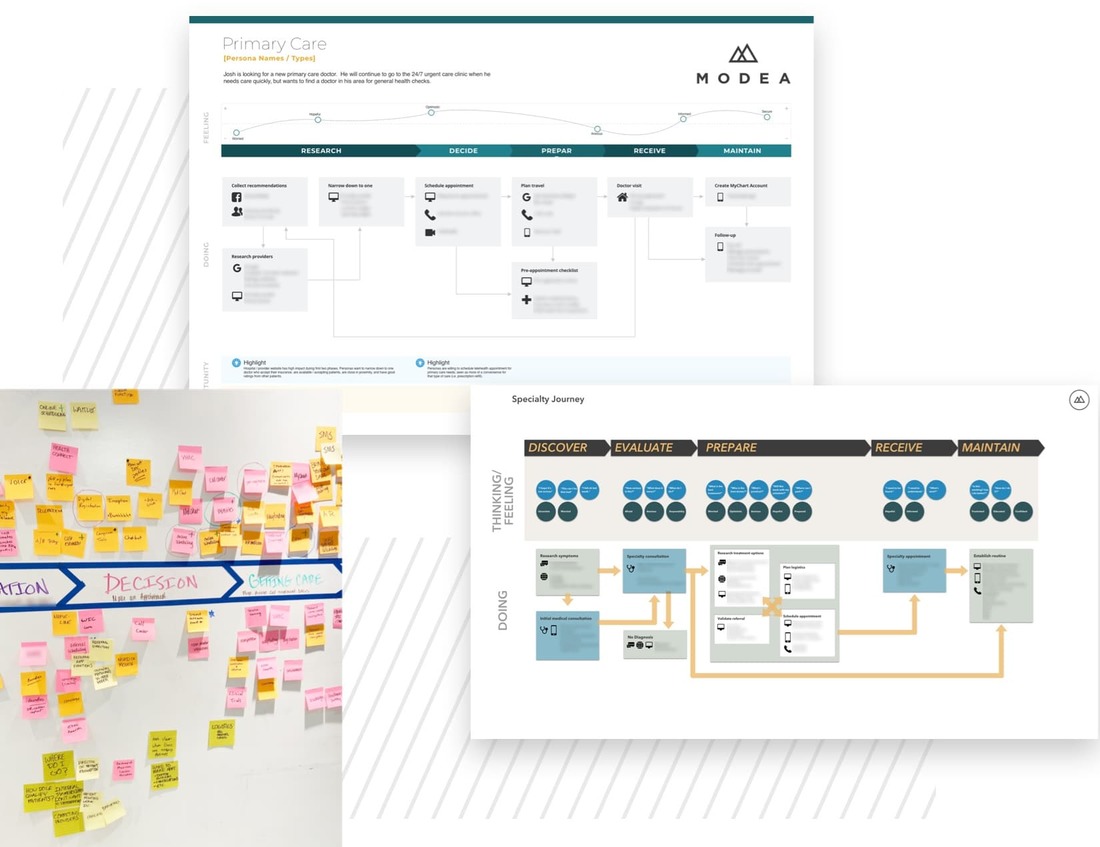
Earlier this month, our team sponsored, exhibited, and presented at the Healthcare Marketing & Physician Strategies Summit in Miami. It was refreshing to be back in person and see familiar faces.
There were many noteworthy speakers and trending topics covered throughout the week. We decided to put together a list of major takeaways and themes from the content presented for those who were unable to attend this year.
The importance of communication was brought to light last year when consumers and the general public were constantly looking for answers. Yesterday’s news was no longer relevant and most of us spent countless hours sifting through articles only to find that it was now outdated.
HMPS dedicates one out of its five tracks strictly to communication and we attended numerous sessions that provided suggestions on how to do so efficiently and effectively without inundating an audience. Overall the presenters advised that you take a natural, authentic approach to content creation and delivery. Do not make the consumption of news more complicated than it needs to be and make the best use out of the systems you have.
Some organizations took a unique approach to communication that was very notable.
LCMC Health, took a celebratory and welcoming approach to combat the cold, impersonal lines during the vaccine rollout. The Louisiana-based organization made the vaccination process fun for all through the placement of Mardi-Gras-themed floor stickers, photobooths, and free concerts.
Hunterdon Healthcare and organizations had a member from the C-Suite team provide quick and personal updates for the company and patients at large via daily Facebook videos.
This should come as no surprise. We know that consumers are expecting healthcare to deliver experiences as the big tech companies do.
From chatbots to mobile apps, price transparency, and anything in between, you are falling behind if your organization cannot deliver a customer-centric user experience that delivers real value and a lasting impression.
We recently surveyed several nationally ranked hospitals and found that only 18% indicated that they had completed a full, cross-functional customer journey map. Problems arise when digital content is created from the inside out, without data and input from the end-user. Why spend hundreds of thousands of dollars on a consumer-facing product that does not at all meet the needs of the customer?
Not only can journey mapping help you strategically set goals and expectations, but you can also more accurately understand what your customers need. Understanding the importance of customer journey mapping for healthcare and how your team and consumers can directly benefit should be a critical step in your digital road mapping strategy.

It’s fair to say that the experience of living through a pandemic has forever changed consumer behavior, especially in healthcare. Your patients demand quality, affordability, but what else?
From our research, our team uncovered 3 top trends that can help your team prioritize customers’ needs on the web.
We found that the pandemic has exacerbated an interesting trend: customers are more likely to be transactional, and they want transactions to happen immediately.
Did you know that today’s customers are more likely to have shorter sessions—specifically, sessions of 1-3 pageviews? What this means for healthcare websites is that your customers are likely to miss any important content that is more than 1-3 clicks from your product page content.

If a customer enters your site on a non-product page, such as an informational coronavirus page that has updates and relevant information, and is able to navigate to another area of the site within 3 page views, they are roughly 30-40 times more likely to convert.
So even as your customer’s willingness to hunt for information continues to decrease, how well you connect the disparate areas of your site can increase overall conversions for the site.

Since the major onset of telehealth, we’ve seen countless direct benefits. In fact, Becker’s Hospital Review reported that 85.5% of Americans said telehealth has “made it easier to get the care they need.”
However, as we emerge from the pandemic, telehealth should not go to the wayside, rather organizations need to expand beyond virtual urgent care. McKinsey & Company reported that around 40% of consumers stated that they will continue to use telehealth going forward—up from 11% prior to COVID-19.

In addition, research shows that between 40-60% of consumers are interested in broader virtual health solutions i.e. “digital front door” as well as lower-cost health plans.
But how should healthcare systems plan for the next chapter of virtual healthcare?
Our team suggests that any digital plan forward should be rooted in data by firstly understanding your consumers and their needs. This can be done through customer journey mapping exercises, user interviews, persona development, and more. The collected data should then be used to drive the creation of seamless consumer experiences across the board and will help to optimize the future of your organization’s virtual care longevity.
Why not aim for a more human, patient-oriented approach, reduce the strain on your limited resources and drive cost savings in your delivery of healthcare?
All sounds fantastic! But, have you and your team thoroughly thought through your organization’s specific needs?
A well-thought-out and implemented chatbot can seamlessly integrate into an organization’s digital consumer experience, however, a not-so-great one can lead to serious consumer discontent. That’s why our UX team advises that before getting too excited about a chatbot, you and your team first determine an answer to…
“What is the main problem you’re trying to solve for the consumer?”
In order to create a proper chatbot, you will need to be very clear and upfront about its capabilities. Otherwise, some patients will automatically expect to “chat” and have a full range of flexibility but, when the chatbot is unable to do so, will become frustrated. We suggest that your team plans to complete an in-depth UX exercise prior to implementation. This would include settling on a goal, mapping out personas, crafting user flows, and teasing out the language and possibly synonyms your chatbot will use.
Quick tip: if you’re trying to help a patient find content your team may be better off investing in content strategy and internal search.

COVID has helped to accelerate digital transformation and consumer experiences for healthcare. But now, as we emerge from the pandemic it’s imperative that organizations continue to forge stronger connections with patients and the tools they interact with to remain competitive.
Our team can help.
We help healthcare organizations identify the right digital strategies and create products that infuse control, transparency, and choice into the consumer healthcare experience.
Contact us to learn how our clients are tackling some of healthcare’s biggest challenges.
We help healthcare organizations identify the right digital strategies and create products that infuse control, transparency, and choice into the consumer healthcare experience.
What does upgrading your Drupal platform have to do with cybersecurity at your hospital? Everything. Nefarious actors like hackers are experts at exploiting weaknesses in ...read more
By nearly every objective measure of health, people who live in rural areas are doing worse than those who live in urban and suburban areas.This health gap between rural and non-rural ...read more
On a daily basis, we complete a variety of digital tasks in a matter of seconds or minutes without thinking twice about the complexity. Thoughtful design makes these experiences easy ...read more
In partnership with our clients, we are proud to announce that Modea was awarded a variety of digital marketing accolades for designing and building exceptional websites and mobile ...read more